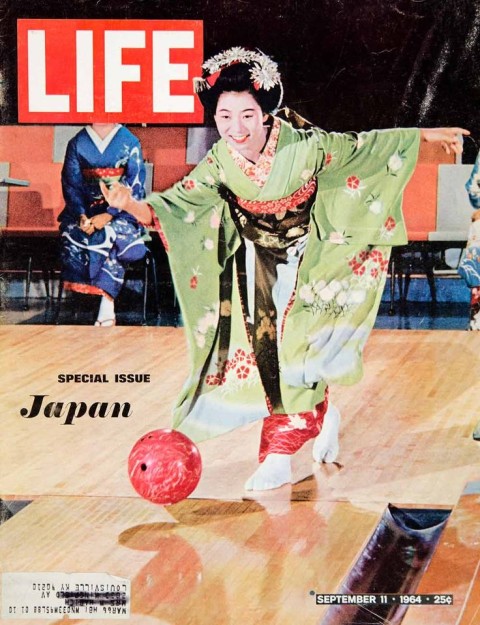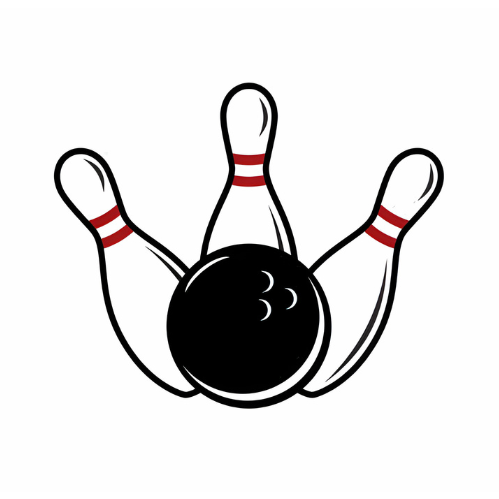Japanese Bowling, known as “bowling” in Japan, is a popular recreational and competitive sport. It follows standard bowling rules with ten-pin setups and strikes being the ultimate goal.
Japan has embraced bowling as a favorite leisure activity and a sport with a competitive edge. With its first bowling alley opening in 1903, the sport has developed a rich history within the country. Bowling alleys in Japan offer state-of-the-art facilities, often featuring advanced technology for scoring and lane maintenance.
These venues also serve as social hubs, offering entertainment and dining options, appealing to families, young adults, and corporate groups. The sport’s popularity peaked in the 1970s and 1980s, marked by the “bowling boom,” but it maintains a dedicated following today with tournaments and leagues keeping the competitive spirit alive.

Credit: www.kcjs.jp
The Rise Of Bowling In Japan
The sport of bowling gained immense popularity in Japan after World War II. U.S. military bases introduced the game, sparking interest among the Japanese population. This gave rise to the bowling boom of the 1960s and 1970s. Alleys popped up all across the country, becoming a favored pastime for many.
Recent times have seen a decline in bowling’s popularity. With the advent of technology and diverse entertainment options, fewer people are hitting the lanes. The number of bowling alleys has dropped significantly. Despite this, a core community continues to enjoy the sport in Japan.

Credit: wi101.wisc.edu
Bowling Alleys As Cultural Hubs
Japanese bowling centers are more than just places to play a game. They serve as vibrant social spaces where people gather, connect, and celebrate. These alleys often blend bowling with other activities, creating a unique entertainment experience.
Many centers have arcades, karaoke rooms, and eateries. This mix invites families, friends, and even businesses for varied leisure options. As a result, these centers become important in the local community. They are spots to unwind and enjoy quality time with loved ones.
Technical Aspects Of Japanese Bowling
Japanese bowling has distinct features that separate it from other forms. The balls used in Japanese bowling, known as ‘bowling balls’ are often lighter and smaller. This makes them different from the typical heavy balls many bowlers use. Pins are also unique, often being thinner and taller. This changes how they fall.
The lanes in Japan may have different oil patterns too. These patterns affect how the ball moves. Bowlers in Japan must learn different ways to throw. Special techniques help them hit the pins just right.
Many Japanese bowlers have a soft, smooth style. They roll the ball gently. This is unlike the powerful throws you might see elsewhere. They use swift wrist movements to control the ball’s spin.
Professional Bowling Scenario In Japan
Professional Bowling Scene in Japan is vibrant and competitive. Major tournaments in Japan often feature top-ranking players. Champions from these events gain international recognition. Many Japanese bowlers have left a mark on the global scene. These athletes showcase skills that shape global bowling trends.
The Japan Professional Bowling Association (JPBA) hosts prestigious events like the Japan Cup. Bowlers from all around the world look up to the Japan Cup. This tournament often sets the stage for international rivalries.
Japanese champions such as Mika Koivuniemi have influences outside Japan. Mika’s triumphs in several American and international tournaments highlight Japan’s impact. The success of Japanese bowlers on the global stage can inspire many. This inspiration fuels the popularity of bowling worldwide.
Bowling In Japanese Media And Popular Culture
Bowling is a beloved theme in Japanese media. Anime and manga often showcase characters enjoying the sport. This helps spark interest among fans. Many films also feature bowling scenes, highlighting its popularity in Japan. These portrayals can range from dramatic to comedic, reflecting various aspects of the game’s culture.
The excitement for bowling extends into the digital realm. A variety of bowling-based video games exist, offering players a virtual experience. Most notable are the arcade-style games, which bring the thrill of bowling alleys to screens. These games are fun and engaging, especially in multiplayer modes. The virtual experiences are often so realistic that they can even improve a player’s real-life skills.
Future Prospects And Revitalization Efforts
Japanese bowling alleys are embracing cutting-edge technology to draw in a younger crowd. Interactive displays and automated scoring now enhance the traditional game. Glow-in-the-dark lanes and lively music create a party-like atmosphere. There’s even virtual reality (VR) bowling, letting players hit pins in digital worlds.
Social media-friendly features, like selfie stations and shareable score graphs, keep the game trendy among younger audiences. With these smart integrations, bowling becomes more than a sport—it’s an entertainment experience. These steps aim to keep the sport fresh and exciting.

Credit: www.mysanantonio.com
FAQ
What Is The Origin Of Japanese Bowling?
Japanese bowling, known as “bowlingu” in Japan, originated in the late 19th century. It became popular post-World War II with the introduction of automatic pinsetters.
How Does Japanese Bowling Differ From American?
Japanese bowling alleys often feature unique technology and local rules. Scoring and equipment are similar but the customer service and entertainment options may differ.
What Are The Popular Japanese Bowling Games?
Besides the traditional ten-pin, Japan enjoys “Bo-Taoshi” and “Autobowling” – variations that include unique pin arrangements and scoring systems.
Where To Find The Best Bowling Alleys In Japan?
Tokyo and Osaka host some of Japan’s best alleys, with Shinjuku’s “Round1” and Osaka’s “Umeda Joypolis” known for their cutting-edge facilities.
Conclusion
Bowling in Japan is more than a pastime—it’s a cultural journey. As you roll your way through, you’ll discover vibrant alleys echoing with energy and history. Embrace the game; let it lead you to unique experiences and lifelong memories. So, tie those laces tight.
It’s time to hit the lanes and join the fun!
